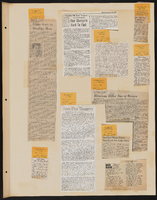Search the Special Collections and Archives Portal
Search Results
Jack Kent Tillar Papers
Identifier
Abstract
The Jack Kent Tillar Papers (approximately 1890-2010) are comprised of magic-related books, periodicals, pamphlets, ephemera, and artifacts from the estate of Jack Kent Tillar who was a composer and music editor for the film and television industry. Materials also include a small amount of Tillar's personal papers. Tillar was an amateur mentalist magician and wrote numerous books and articles on the subject of telepathy and mentalism including
Archival Collection
Sidney R. Whitmore Collection
Identifier
Abstract
The Sidney R. Whitmore Collection (approximately 1885-1970) contains land deeds and other documents about Mount Diablo, Nevada; documents detailing parts of his family history; and eight framed paintings of landscapes and portraits.
Archival Collection
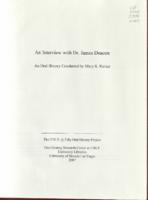
Transcript of interview with Dr. James Deacon by Mary K. Keiser, August 24, 2006
Date
Archival Collection
Description
Text

Transcript of interview with Mary Laub by Wendy Starkweather, December 02, 2013
Date
Archival Collection
Description
Text
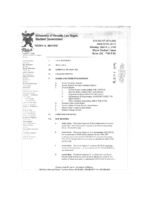
Meeting minutes for Consolidated Student Senate University of Nevada, Las Vegas, March 2, 1998
Date
Archival Collection
Description
Text
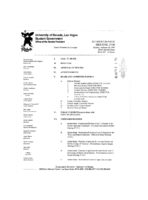
Meeting minutes for Consolidated Student Senate University of Nevada, Las Vegas, February 10, 1997
Date
Archival Collection
Description
Text
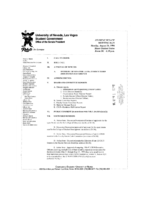
Meeting minutes for Consolidated Student Senate University of Nevada, Las Vegas, August 26, 1996
Date
Archival Collection
Description
Text
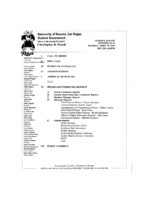
Meeting minutes for Consolidated Student Senate, University of Nevada, Las Vegas, April 28, 2003
Date
Archival Collection
Description
Text
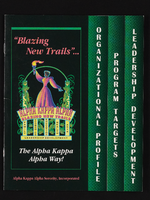
Alpha Kappa Alpha Sorority, Theta Theta Omega Chapter program committee minutes
Date
Archival Collection
Description
From the Alpha Kappa Alpha Sorority, Incorporated, Theta Theta Omega Chapter Records (MS-01014) -- Chapter records file.
Text

